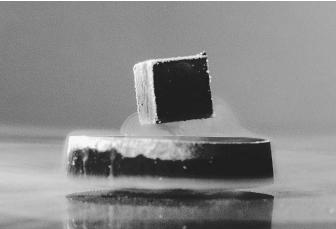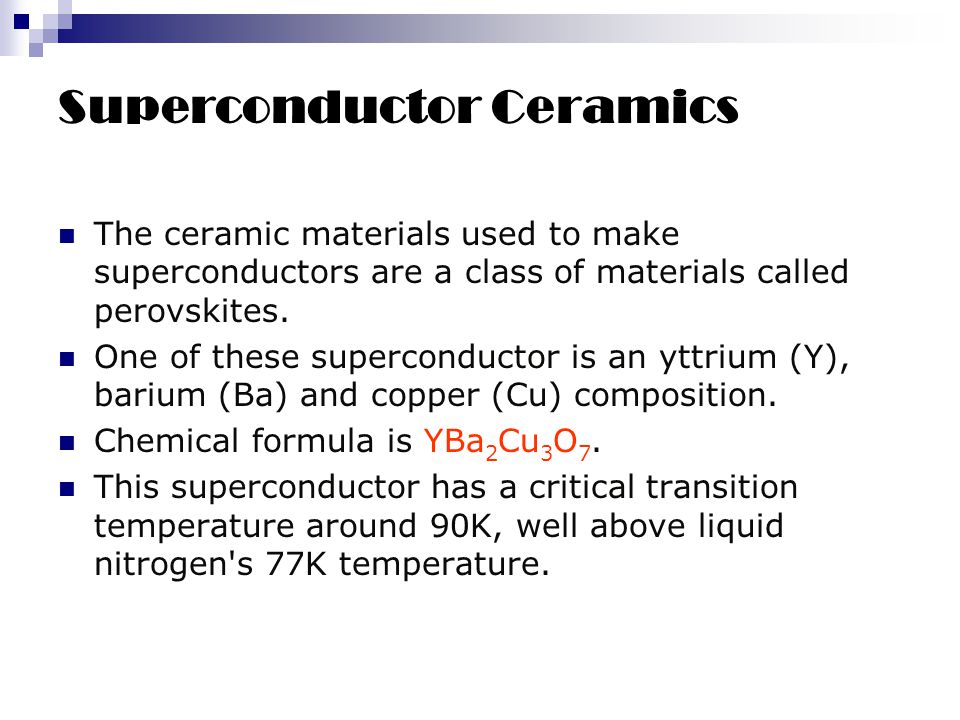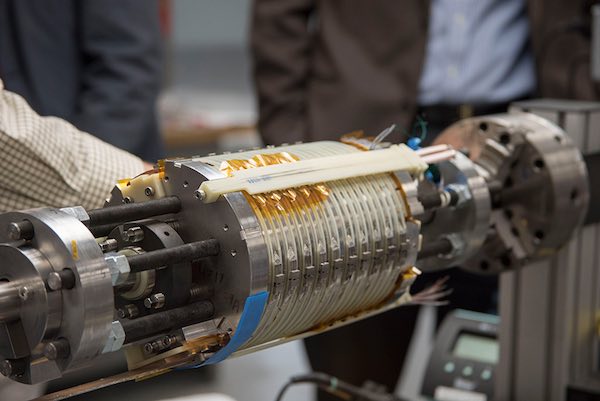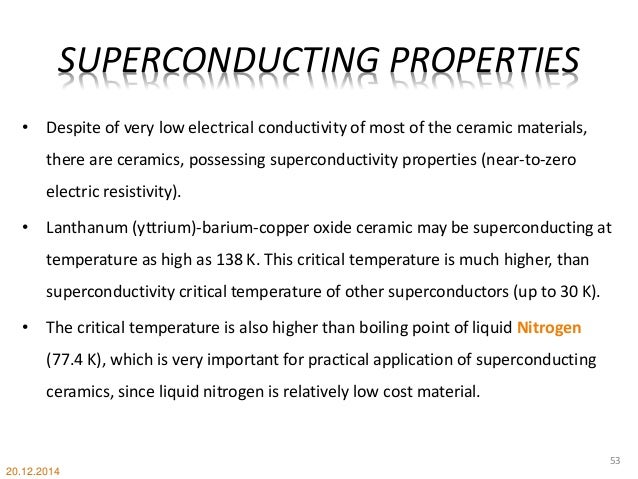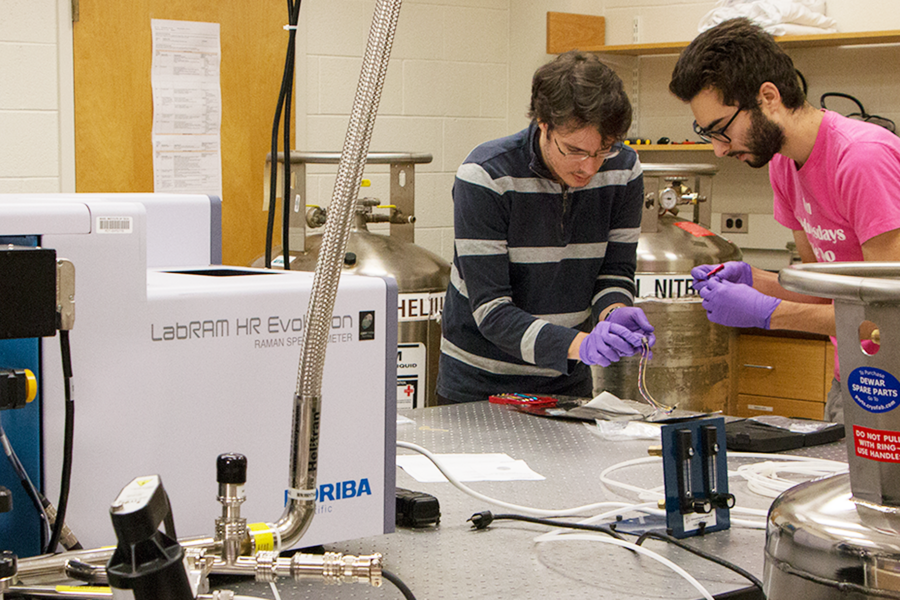The first high temperature superconductor was discovered in 1986 by ibm researchers bednorz and müller 3 6 who were awarded the nobel prize in physics in 1987 for their important break through in the discovery of superconductivity in ceramic materials.
Ceramic superconductors uses.
The ceramic materials used to make superconductors are a class of materials called perovskites.
In 1988 jin and co workers at at t bell laboratories reported that melt textured yba 2 cu 3 o 7 x had a j c of 17 10 7 am 2 in a field of 0t at 77 k measured over a short length.
Tc is usually measured in degrees kelvin k 0 k being absolute zero the.
The temperature at which resistance ceases is referred to as the transition temperature or critical temperature tc.
Conductive ceramics conductive ceramics superconductors.
This superconductor has a critical transition temperature around 90k well above liquid nitrogen s 77k.
Chemical formula is yba2cu3o7.
Melt texturing of ybco was the first method used to attempt texturing in any ceramic superconductor.
The superconductor we will be experimenting with is an yttrium y barium ba and copper cu composition.
The discovery of high temperature above the temperature of liquid nitrogen ceramic superconductors has changed superconductivity from an interesting curiosity to a useable technology with particular applications in the medical field as a superconducting magnet in mri scanners.
Ceramic superconductors are generally heavy metal oxides and neutron diffraction has long been superior for the precise location of light atoms such as hydrogen and oxygen in the presence of heavy atoms.
10 new high temperature superconductors.
Many ceramic superconductors physically behave as superconductors of the second type.
Science and technology 2002.
Superconductivity is the complete disappearance of electric resistance in materials that are cooled to extremely low temperatures.

